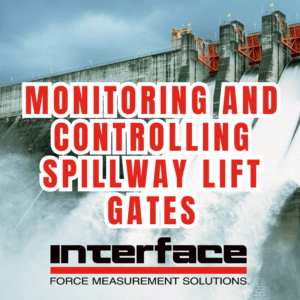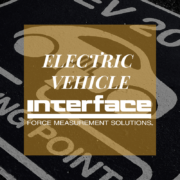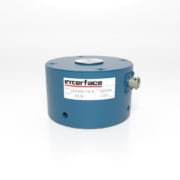Monitoring and Controlling Spillway Lift Gates
 Load cells are used in spillway gates to measure the force or load acting on the gate. The accuracy of these measurements is essential for managing water flow in spillways, dams, and similar water management structures. A load cell’s measurement data helps to monitor and control the position and stress on the gate to ensure safe and efficient operation.
Load cells are used in spillway gates to measure the force or load acting on the gate. The accuracy of these measurements is essential for managing water flow in spillways, dams, and similar water management structures. A load cell’s measurement data helps to monitor and control the position and stress on the gate to ensure safe and efficient operation.
Civil engineers and equipment manufacturers need immediate data to modernize vital infrastructure worldwide. A spillway gate’s exact capacity and dimensions may require a custom measurement solution to integrate the sensor into the design. Retrofitting spillways with advanced sensor technologies is essential to maintain gates, improve lift and closure, protect the environment, and safeguard people.
When selecting load cells for lift gates in spillways, it’s essential to consider factors such as the load range, accuracy, environmental conditions such as exposure to water and temperature variations, and the communication and control system. The load cells should be robust and designed to withstand the harsh conditions typically found in spillways.
Types of Interface Products Used for Spillway Lift Gates
- LowProfile Load Cells are ideal for high accuracy and fatigue testing.
- Mini Load Cells are best when space limitation for the sensor or a small measurement capacity fits the requirements.
- Load Washer Load Cells are often used for structural monitoring and are easy to implement with a thru-hole design.
- Multi-axis sensors are used with more than one axis of continuous measurement if necessary, or the project requires more data than a single sensor can produce.
- Load Pins and Load Shackles are ruggedized and provide easy installation to existing equipment, such as gates.
- Data Acquisition Systems can graph, log, and store data for continuous analysis and for creating safety systems.
- Indicators Instruments enable the operator to have real-time analysis of measurement data.
- Portable Instrumentation Modules are helpful when operators move around a site or need cableless devices.
- Wireless Telemetry Systems are growing in popularity due to the cable-free options.
- Submersible Load Cells are essential for some projects due to the exposure to moisture and various environmental conditions.
- Enclosures are helpful to protect the sensor and instrumentation. They also provide mobility options for different types of project requirements.
How it Works: Load Cells Used for Monitoring and Controlling Spillway Gates
Load cells are positioned at various points on the gate structure to measure the force or load acting on the gate. This data helps determine the weight of water pressing against the gate, which is crucial for managing water flow. Load cells can monitor the load on a spillway lift gate during operation to ensure that the gate is not overloaded.
The load cell is connected to a data acquisition system or a controller for real-time monitoring and analysis. This system collects data from the load cells, which can be used to calculate the pressure exerted on the gate by the water.
The load cell data can be used to control the position of the gate. By continuously monitoring the load, the gate can be adjusted to maintain a particular load or to keep the gate at a specific position. This is important for controlling the water flow through the spillway.
Using Interface instrumentation solutions, the measurement data can trigger alarms if the load exceeds safe limits. This can alert operators to potential issues or dangerous conditions that must be addressed due to environmental factors or flood controls.
Interface’s Log100 Software is designed to map, record, and analyze the output data. It is valuable for assessing the gate’s performance and making necessary adjustments to ensure its longevity and reliability.
Controlling the Position of a Spillway Lift Gate
A civil engineering firm needs to control the position of a spillway lift gate to maintain a specific water level of a reservoir and control the water flow through the spillway. They desire a feedback control loop system for continuous monitoring.
Interface recommends using Interface’s 3-Axis Multi-Axis Sensor Load Cell to measure the force required to lift the gate and adjust the gate’s position to maintain the desired load. The Interface BX6 Data Acquisition System is programmed to maintain a constant load on the gate, ensuring that the water level in the reservoir remains constant, even as the inflow of water changes. The load cell can also measure the force required to lift the gate and predict the future position of the gate. The gate is then adjusted to ensure it reaches the desired position at the chosen time, with the ability to release a certain amount of water from the reservoir. This would help control the water flow downstream and prevent flooding.
The type of load cell and instrumentation selected for any spillway lift gate will depend on the application requirements. If you have questions about the type of measurement solution best suited for your project or design, please contact our application engineers.








